Mass of the pulley is m & radius is R. Assume pulley to be disc. Block of mass m is released from the position shown. String is massless & inextensible. There is no slipping between rope and pulley. The impulse exerted by the string on the pulley at the moment string becomes taut is J then2m√gRJ is equal to

5
3
1
none of these
The correct Answer is:B
Step by step video & image solution for Mass of the pulley is m & radius is R. Assume pulley to be disc. Block of mass m is released from the position shown. String is massless & inextensible. There is no slipping between rope and pulley. The impulse exerted by the string on the pulley at the moment string becomes taut is J then(2msqrt(gR))/(J) is equal to by Physics experts to help you in doubts & scoring excellent marks in Class 12 exams.
Updated on:21/07/2023Topper's Solved these Questions
- 10 ROTATIONALBOOK - MOTIONCHAPTER - 10 ROTATIONALEXERCISE - Exercise - 2 (Level -I)
51 Videos
- 10 ROTATIONALBOOK - MOTIONCHAPTER - 10 ROTATIONALEXERCISE - Exercise - 2 (Level - II)
25 Videos
- 10 ROTATIONALBOOK - MOTIONCHAPTER - 10 ROTATIONALEXERCISE - Example 31
1 Videos
- ALTERNATING CURRENTBOOK - MOTIONCHAPTER - ALTERNATING CURRENTEXERCISE - EXERCISE - 4 (LEVEL - II)
14 Videos
Similar Questions
The system shown in fig, is released from rest. Calculate the tension in the string and the force exerted by the string on the pulleys, assuming pulleys and strings are massless.
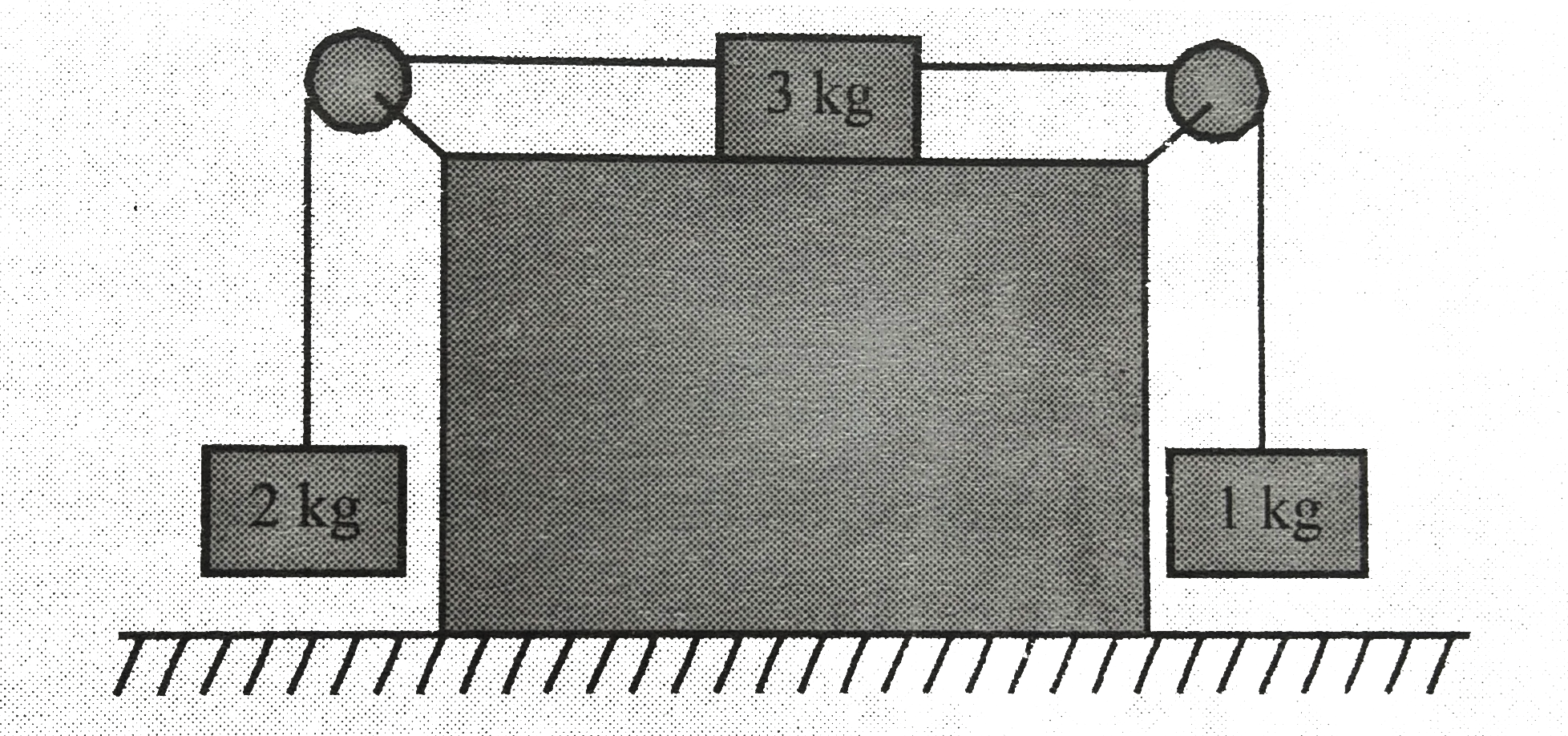
View SolutionThe system as shown in fig is released from rest. Calculate the tension in the strings and force exerted by the strings on the pulley. Assuming pulleys and strings are massless
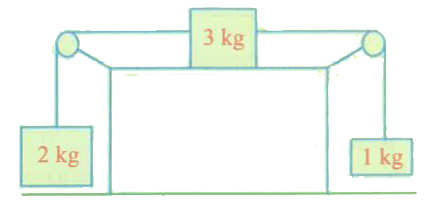
View Solution
Knowledge Check
If the string & all the pulleys are ideal, acceleration of mass m is :-
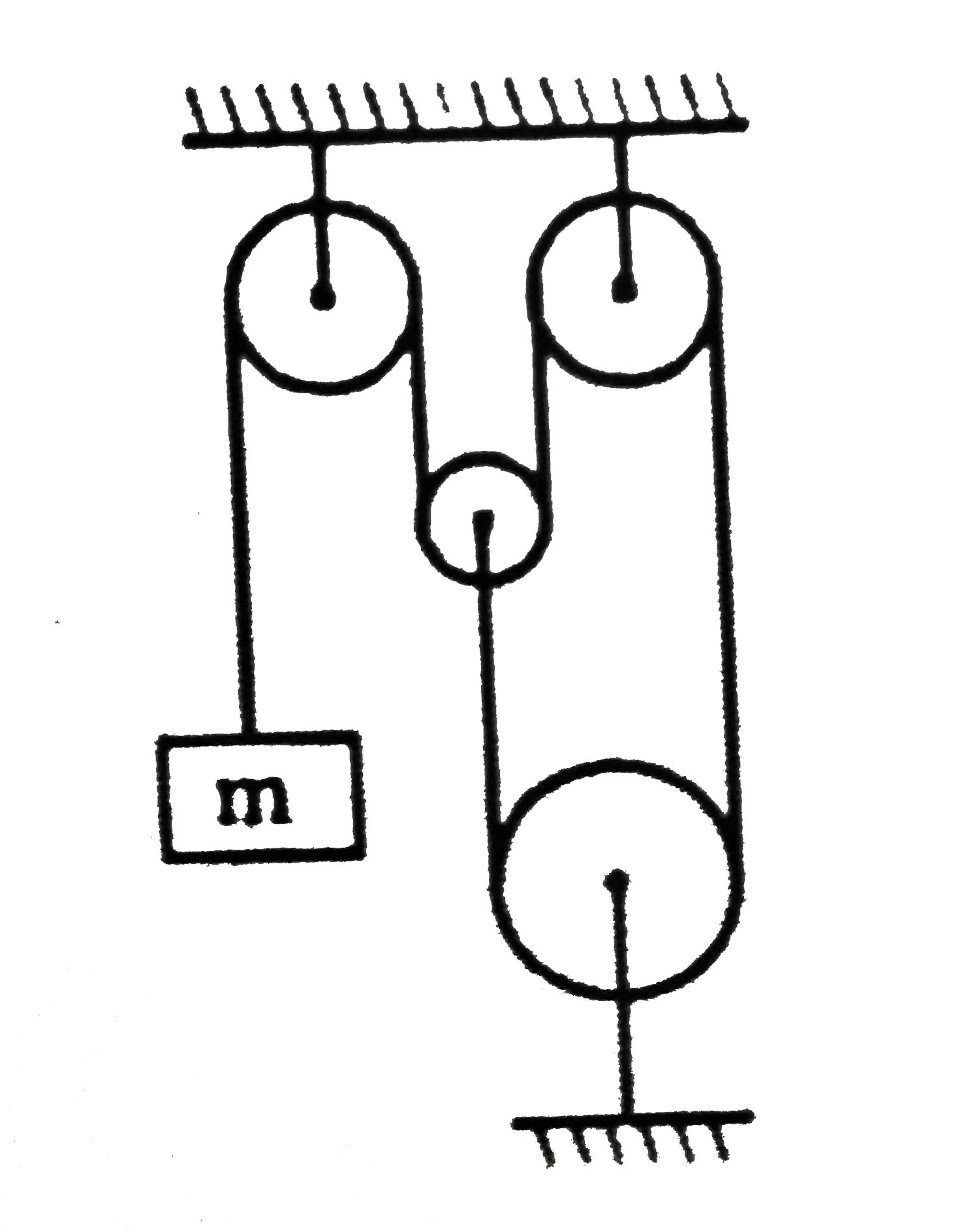 Ag2B0CgDdependent on m
Ag2B0CgDdependent on mA block of mass m is attached at the end of an inextensible string which is wound over a rough pulley of mass M and radius R. Assume the string does not slide over the pulley. Find the acceleration of the block when released.
Amg2m+MB2mgm+MCmgm+MD2mg2m+MIn the pulley system shown the movable pulleys A,B and C have mass m each, D and E are fixed pulleys. The strings are vertical light and inextensible Then
 .Athe tension throughout the string is the same and equals T=2mg3 .Bpulleys A and B have acceleration g3 each in downward direaction and pulley C has acceleration g3 in wpward direaction .Cpulleys A,B and C all have accleration g3 in downward direction .Dpulley A has acceleration g3 in downward direction and pulleys B and C have acceleration g3 each in upward direction .
.Athe tension throughout the string is the same and equals T=2mg3 .Bpulleys A and B have acceleration g3 each in downward direaction and pulley C has acceleration g3 in wpward direaction .Cpulleys A,B and C all have accleration g3 in downward direction .Dpulley A has acceleration g3 in downward direction and pulleys B and C have acceleration g3 each in upward direction .
In the figure, the massless and inextensible thread does not slip on the pulley. It is wound over pulley as shown. If the system is released from rest,
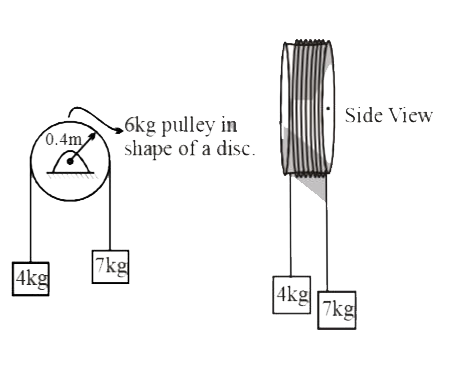
View SolutionIn the system shown in the given figure, the inline is frictionless, the string is massless, and inextensible pulley is light and frictionless. The system is released from rest.
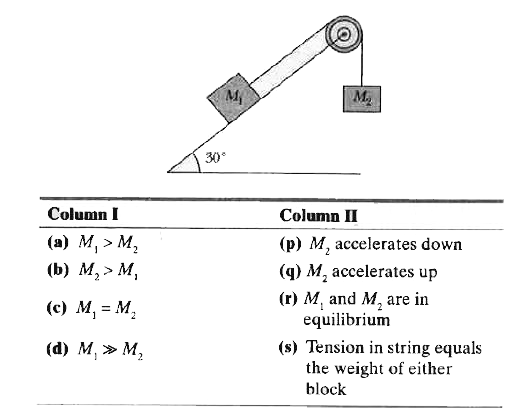
View SolutionThe pulley is light and smooth: the strings are inextensible and light. The system is released from rest, find the acceleration of each block, tensions in the strings and reaction in pulley.
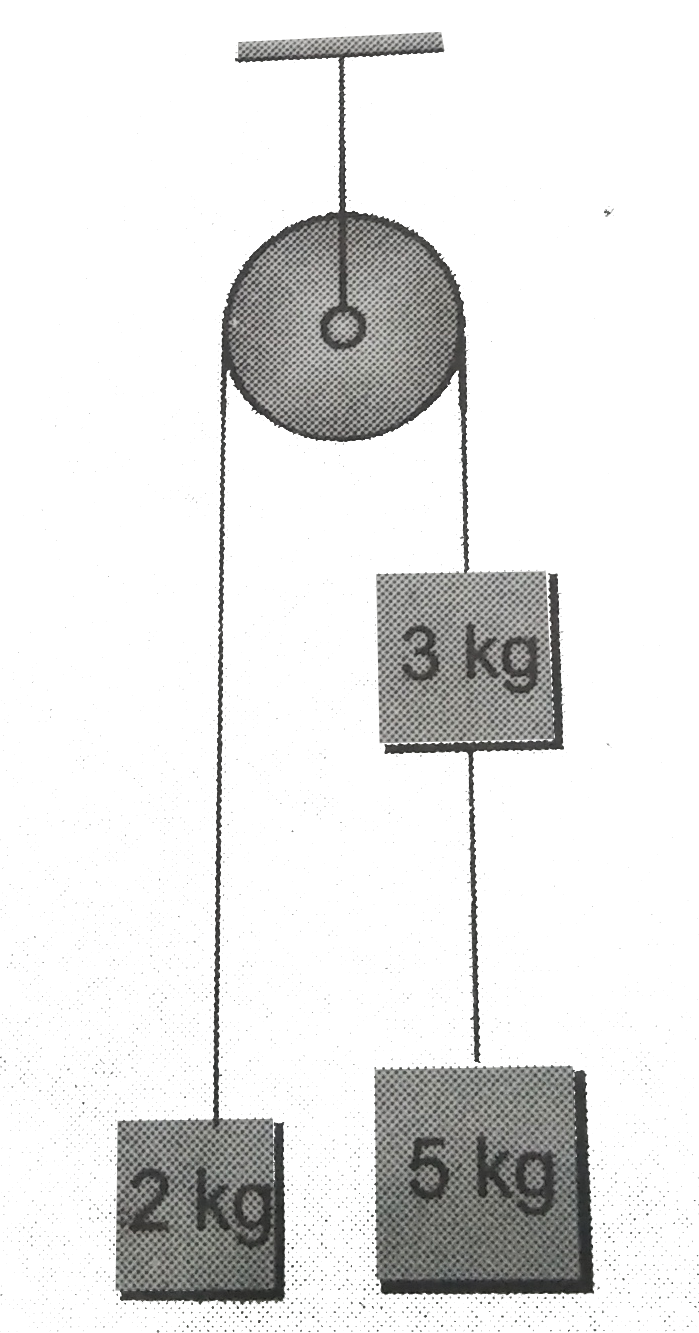
View SolutionIn the figure, the disc D does not slip on the surface S, the pulley P has mass and the string does not slip on it. The string is wound around the disc.
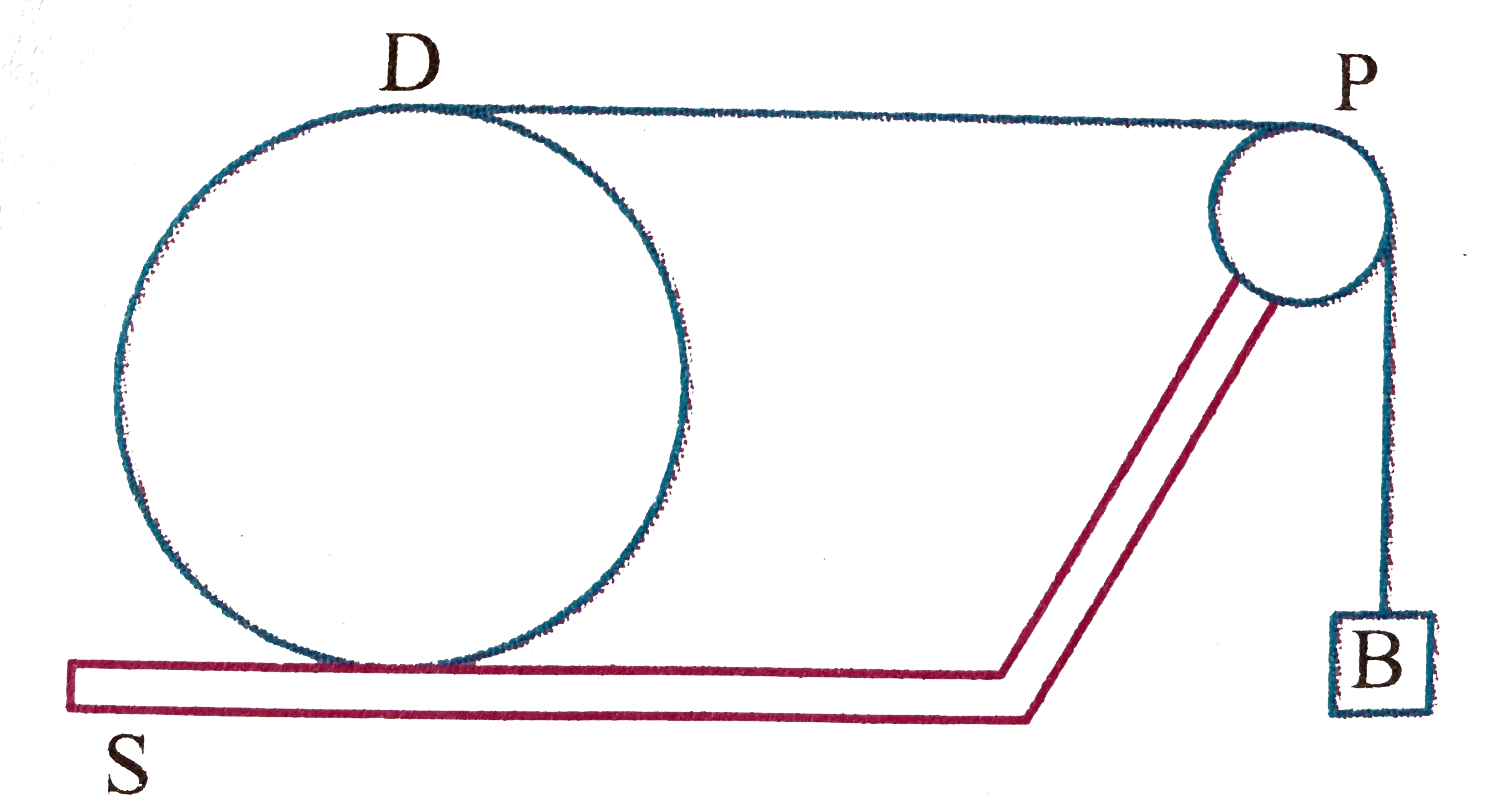
View SolutionTwo blocks of masses m1=4kg and m2=2kg are connected to the ends of a string which passes over a massless, frictionless pulley. The total downwards thrust on the pulley is nearly
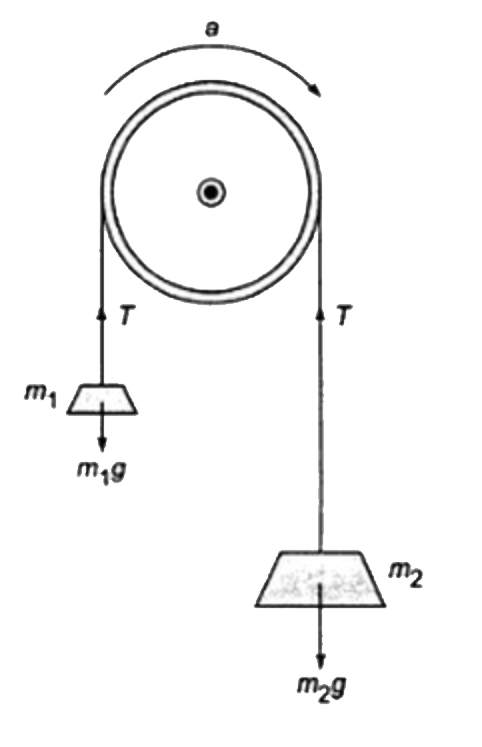
View Solution
